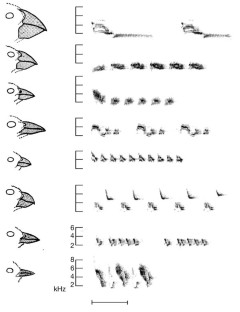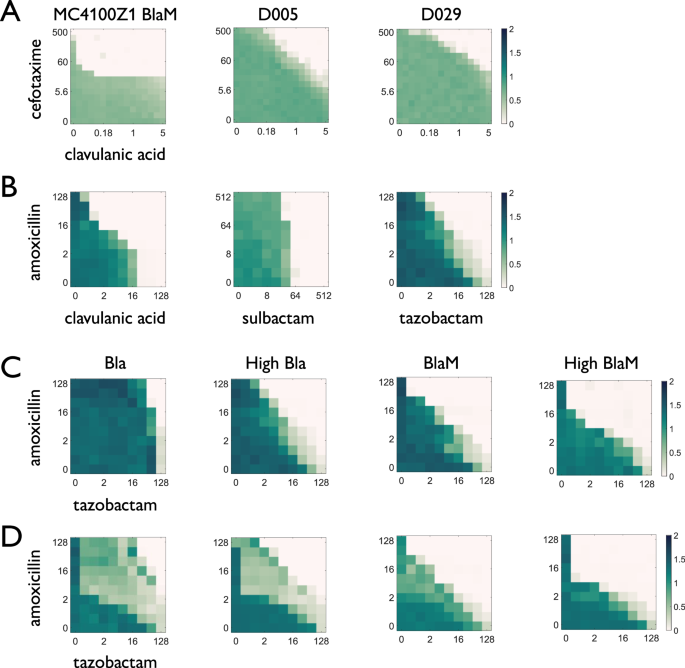2024-10-10 マサチューセッツ大学アマースト校

The beaks of Darwin’s medium ground finches can evolve to crush the shells of hard seeds. Credit: Andrew Hendry
実験では、将来の干ばつを想定し、それによって変化したくちばしと歌をシミュレーションし、その「未来の歌」を現在のフィンチに聞かせたところ、6回の干ばつ後にはフィンチの反応がほとんど見られなくなり、新種が出現する可能性を示しました。
<関連情報>
- https://www.umass.edu/news/article/how-playing-songs-darwins-finches-helped-umass-amherst-biologists-confirm-link-between
- https://www.science.org/doi/10.1126/science.adj4478
- https://www.nature.com/articles/35051570
ダーウィンフィンチにおける生態学的種分化: フィンチの未来の亡霊 Ecological speciation in Darwin’s finches: Ghosts of finches future
Jeffrey Podos and Katie M. Schroeder
Science Published:10 Oct 2024
DOI:https://doi.org/10.1126/science.adj4478
Editor’s summary
When we think of a species adapting to environmental change, we mostly think about one trait. However, changes in one trait will likely affect others. In Galápagos finches, it has been shown that drought can lead to a change in bill size and shape in response to shifts in seed resources. However, birds do not just eat with their bills, they also sing with them. Podos and Schroeder predicted how bill size would change in response to a series of droughts and forecasted the songs that they would produce. They found that, after a series of simulated droughts, the songs differed enough that territorial male birds no longer recognized them. —Sacha Vignieri
Abstract
The theory of ecological speciation posits that adaptive divergence among incipient species raises incidental barriers to reproduction, thus catalyzing the emergence of new species. In this study, we conducted an experimental test of this theory in Galápagos finches, a clade in which beaks and mating songs are mechanistically linked. We forecasted the acoustic structure of songs for a set of possible evolutionary futures (successive droughts spurring increasingly large beaks) and, in a field assay, presented resulting song simulations to territorial males. We found that responses to songs dropped off after six simulated drought events, to degrees roughly comparable to drops in response to songs that diverged through cultural drift and acoustic adaptation. Our results support, in Darwin’s finches, the feasibility and mechanistic bases of an ecological speciation hypothesis.
ダーウィンフィンチにおける形態と音声信号構造の相関進化 Correlated evolution of morphology and vocal signal structure in Darwin’s finches
Jeffrey Podos
Nature Published: 11 January 2001
DOI:https://doi.org/10.1038/35051570

Abstract
Speciation in many animal taxa is catalysed by the evolutionary diversification of mating signals1. According to classical theories of speciation, mating signals diversify, in part, as an incidental byproduct of adaptation by natural selection to divergent ecologies2,3, although empirical evidence in support of this hypothesis has been limited4,5,6. Here I show, in Darwin’s finches of the Galápagos Islands, that diversification of beak morphology and body size has shaped patterns of vocal signal evolution, such that birds with large beaks and body sizes have evolved songs with comparatively low rates of syllable repetition and narrow frequency bandwidths. The converse is true for small birds. Patterns of correlated evolution among morphology and song are consistent with the hypothesis that beak morphology constrains vocal evolution, with different beak morphologies differentially limiting a bird’s ability to modulate vocal tract configurations during song production. These data illustrate how morphological adaptation may drive signal evolution and reproductive isolation, and furthermore identify a possible cause for rapid speciation in Darwin’s finches.


